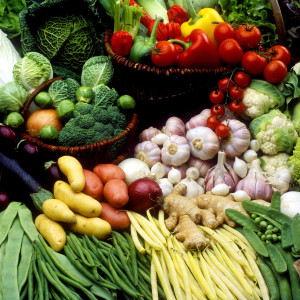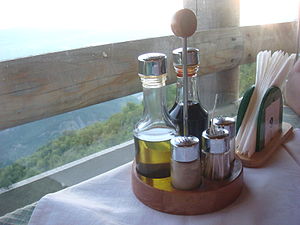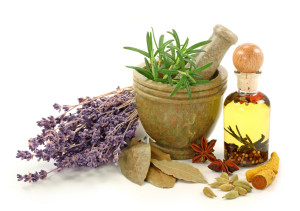Easy ways to boost your salad’s nutritional value
I recently received an email from one of my teenage nieces asking for some nutritious salad recipes that she could make with ingredients generally kept on hand. While salads, by definition, are considered to be healthy, it’s an unfortunate reality that many of us are not getting the full nutritional benefits from our salads that we believe we are. What a shame to eat an entire salad but miss out on a good portion of the vitamins and minerals that it contains! There are several easy things we can do to to boost the goodness in the veggies and other ingredients in those salads. I would like to share with you the recipes I sent to her along with some tips to make sure that you reap all the benefits.
 The most healthful salads are made with fresh, unprocessed foods, preferably organic and/or local produce. In Israel there are a number of CSA (community supported agriculture) organic farms, health food stores, and people providing delectable organic produce and organic and natural products. Aim for a variety of different colored vegetables and different types of foods in order to get as many of the vitamins, minerals, and other nutrients important for good health as possible.
The most healthful salads are made with fresh, unprocessed foods, preferably organic and/or local produce. In Israel there are a number of CSA (community supported agriculture) organic farms, health food stores, and people providing delectable organic produce and organic and natural products. Aim for a variety of different colored vegetables and different types of foods in order to get as many of the vitamins, minerals, and other nutrients important for good health as possible.
I like to have a raw vegetable salad as a first course since raw foods provide a variety of enzymes (which are destroyed when cooked) to help with digestion. Enzymes break down the foods we eat so that our bodies can utilize the nutrients in them. This is particularly necessary since most of us tend to stop producing sufficient digestive enzymes as we get older.
 Including any grains, nuts, seeds, or legumes in your salad? Be sure to give them an extensive soaking to remove the phytates and enzyme inhibitors present. Phytates (which bind minerals) and enzyme inhibitors prevent spontaneous germination. When seeds are planted and watered, their phytates and enzyme inhibitors are deactivated so that a plant can grow. Similarly, when we soak them (learn how here and here), we deactivate the phytates and enzyme inhibitors to make their nutrients more accessible to us. Otherwise, not only will they prevent us from absorbing all of their vitamins and minerals, but they can also act as anti-nutrients, preventing us from utilizing many of the enzymes, vitamins, and minerals in the other foods in our meal.
Including any grains, nuts, seeds, or legumes in your salad? Be sure to give them an extensive soaking to remove the phytates and enzyme inhibitors present. Phytates (which bind minerals) and enzyme inhibitors prevent spontaneous germination. When seeds are planted and watered, their phytates and enzyme inhibitors are deactivated so that a plant can grow. Similarly, when we soak them (learn how here and here), we deactivate the phytates and enzyme inhibitors to make their nutrients more accessible to us. Otherwise, not only will they prevent us from absorbing all of their vitamins and minerals, but they can also act as anti-nutrients, preventing us from utilizing many of the enzymes, vitamins, and minerals in the other foods in our meal.

Vegetables contain the important fat-soluble vitamins A, D, & K. These vitamins not only work synergistically with each other, but also work synergistically with essential minerals such as magnesium and zinc to perform a multitude of critical functions supporting many of the systems in our body. It is important to choose high fat dressings for this purpose since they yield the greatest rates of absorption of these vitamins and extra virgin olive oil is a preferred salad oil for this purpose. (Yellow butter on veggies will also serve the same purpose, imparting great flavor and enhancing vitamin absorption.)
Canola oil and polyunsaturated vegetable oils have been found not only to be less effective than extra virgin olive oil or animal fats in promoting the absorption of fat soluble vitamins, but actually impair our health due to their high levels of omega-6 fatty acids, creating a great omega-6:omega-3 imbalance in the body. The proper proportion of both of these fatty acids is critical for overall health and brain health and our tremendous reliance on vegetable oils high in omega 6 has created a dangerous fatty acid imbalance for many of us and may be partly responsible for a lot of the chronic illnesses and infirmities we are afflicted with. Oils which are not cold pressed are extracted from the vegetable or fruit with chemicals, excessive pressure, and high heat, causing them to become denatured and rancid before they are even bottled. (See my blog post about oils here).
Make sure that the olive oil you buy is really olive oil. Unfortunately the olive oil industry is  rife with fraud and had been for centuries. U.C. Davis College of Agricultural and Environmental Sciences has been testing olive oils commonly sold in the U.S. Many of the brands sold in major supermarkets, including Philipo Berrio, Bertolli, and Colavita did not past their testing for quality and purity. Kirkland organic and most of the olive oils made in California did pass their testing and are recommended. For more information click here and here. I blogged about Israeli olive oils here.
rife with fraud and had been for centuries. U.C. Davis College of Agricultural and Environmental Sciences has been testing olive oils commonly sold in the U.S. Many of the brands sold in major supermarkets, including Philipo Berrio, Bertolli, and Colavita did not past their testing for quality and purity. Kirkland organic and most of the olive oils made in California did pass their testing and are recommended. For more information click here and here. I blogged about Israeli olive oils here.
These are the recipes (along with this Cole Slaw recipe) that I sent to my niece:
MY BASIC VEGETABLE SALAD
(I like to cut vegetables up into bite-sized pieces)
Lettuce and/or other salad greens
( I do not use Iceberg lettuce since it has the least nutrition of all the lettuces)
Peppers – all colors
Cucumbers
Apple(s) help keep the doctor away and add sweetness and extra crunch
Depending upon what else is being served with the meal, what I have on hand, and how much time I have, I also usually add some of the following:
Nuts or seeds such as chopped walnuts or sunflower seeds (To remove some of the phytic acid and increase digestibility, prepare them beforehand by soaking them in warm acidulated water (lemon juice works well) for 6-7 hours and dry them in the oven at about 100º C or 225º F) .
Raisins
Shredded carrot
Avocado
Chopped pickles
Olives
Tuna or salmon
Red onion
Bulgarit Cheese (or the somewhat saltier Feta)
A nice addition to salads that I’ve had in some of the restaurants here in Israel is baked slices of sweet potato
Depending on which family members are home and their specific likes/dislikes, I may put one or more of the above items in a bowl(s) on the side.
Herbs which I add to the salad (fresh or dried organic since dried herbs and spices are often irradiated) include: Parsley, Basil, Dill, Marjoram, Thyme, Mint (when I have apples), Sage, Rosemary, and Cilantro.
 Dressing is usually Extra Virgin Olive Oil with either red or white wine vinegar or lemon juice, and good quality sea salt.
Dressing is usually Extra Virgin Olive Oil with either red or white wine vinegar or lemon juice, and good quality sea salt.
TOMATO SALAD
Sliced and quartered tomatoes mixed with Extra Virgin Olive Oil, salt, and oregano. The longer the salad sits before serving, the better the flavors will blend.
HEARTS OF PALM SALAD
Romaine Lettuce
Can of Hearts of Palm (drained)
Avocado – chunked
Tomato – chunked
Red Onion – finely diced
Dress with homemade Italian dressing:
1 clove garlic
4 tablespoons wine vinegar
½ teaspoon dry mustard
½ cup extra virgin olive oil
½ teaspoon salt
Cut garlic clove in half. Mix mustard, salt, garlic and vinegar thoroughly. Add oil and stir until all ingredients are blended. Store in covered jar and shake well before serving.
Related articles
- Olive Oil Salad Dressing & Olive Oil Dressing for Salad | Pottery Barn (potterybarn.com)
- A Salad for Indian Summer (toofullforschool.com)
- To Get The Benefits of Olive Oil, Fresh May Be Best (wnyc.org)
- Greek Quinoa Salad (metromarinade.wordpress.com)
(Make sure to soak the Quinoa earlier in the day or the night before)
Thank you! Nice ideas, informative, welcoming and pleasantly colorful-nice presentation!
So when do we eat?